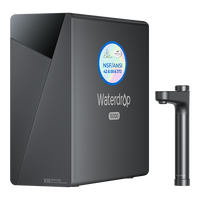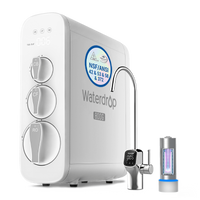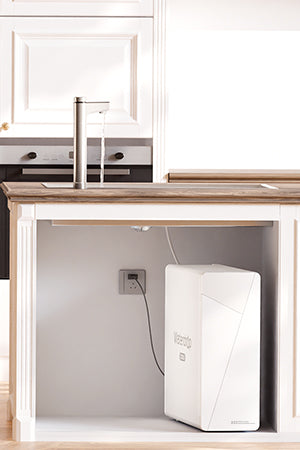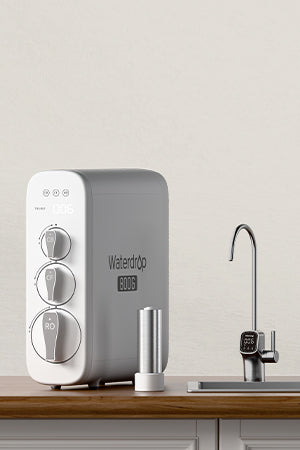For most Canadians, tap water is a routine part of daily life. Whether it’s for drinking, cooking, or cleaning, water from the tap is often the most
convenient and accessible option. Is Canadian tap water safe to drink? Can you rely on the municipal systems to provide clean, healthy water?
In this blog, we’ll explore the safety of
tap water in Canada , factors influencing
water quality, and how Canadians can ensure their tap water is as clean and healthy as possible.
Understanding Tap Water Quality in Canada
Canada is fortunate to have an abundance of freshwater resources, making it one of the wealthiest nations in terms of water availability. However, water
quality varies depending on the source of the water, local treatment processes, and infrastructure. Canada’s drinking water systems are generally considered
safe, but it is important to recognize that there are occasional risks that can compromise water quality, especially in certain regions or under specific
circumstances.
Common Water Contaminants in Canada
While tap water in Canada is generally very safe to drink, some contaminants can occasionally slip through the treatment process or come from the pipes and
plumbing in homes. Here are some of the most common contaminants found in Canadian tap water:
Lead Contamination in Tap Water
One of the most concerning contaminants in drinking water is lead. Lead pipes, commonly used in homes built before the 1950s, can leach lead into the water
supply, especially if the water is more acidic. Lead is a toxic metal that can cause a range of health problems, including developmental delays in children,
kidney damage, and hypertension in adults.
Although lead is not commonly found in treated municipal water, it can be introduced into the water supply through older plumbing systems. This is a
particular concern in cities with aging infrastructure, such as parts of Montreal, Toronto, and Ottawa. The federal and provincial governments are working
to replace lead service lines and minimize the risks of lead contamination.
Microbial Contamination
Pathogens such as bacteria, viruses, and parasites can occasionally contaminate water supplies, particularly during floods, heavy rainfall, or natural
disasters. In most cases, municipal water treatment systems use chlorine or other disinfectants to kill these pathogens before the water reaches homes.
However, there have been occasional outbreaks of waterborne illnesses caused by E. coli,
Giardia , or
Cryptosporidium .
Agricultural Contaminants: Pesticides and Herbicides
In rural areas or agricultural zones, water may be contaminated with pesticides, herbicides, or fertilizers. These chemicals can run off fields during
rainstorms and end up in local water sources. While municipalities take steps to monitor and mitigate these risks, higher levels of agricultural chemicals
can sometimes be detected in water supplies, especially in areas with intensive farming.
Chlorine and Chloramine
To disinfect tap water, municipalities in Canada commonly use chlorine or chloramine. While these chemicals are effective at killing pathogens, they can
also affect the taste and odor of water. Some individuals are sensitive to these chemicals, and long-term exposure may cause irritation to the eyes, skin,
or respiratory system.
Although chlorine and chloramine are present in very low levels and are not harmful to health in the amounts typically found in Canadian tap water, some
people choose to install activated carbon filters to remove these chemicals for improved taste.
How to Ensure Your Tap Water Is Safe
While municipal water in Canada is generally safe, there are steps you can take to further ensure the quality and safety of your tap water:
Install a Water Filter
Water filtration systems are an effective way to remove impurities, improve taste, and safeguard against potential contaminants. Depending on your needs,
you can choose from different types of water filters:
- Activated Carbon Filters: These are ideal for removing chlorine, chloramine, volatile organic compounds VOCs, and unpleasant odors.
-
Reverse Osmosis Systems : Reverse
osmosis filters are highly effective at removing contaminants such as heavy metals including lead, nitrates, and dissolved solids.
-
UV Purifiers: These systems use ultraviolet light to kill bacteria and viruses, making them a good option for those concerned about microbial
contamination.
Make sure to select a filter that addresses your specific concerns, whether it’s taste, chemicals, or heavy metals.
Check Your Plumbing
If you live in an older home, it’s important to assess the condition of your plumbing. Lead pipes and fixtures, commonly used before the 1950s, can leach
lead into the water supply, especially if the water is acidic. If your plumbing includes lead components, consider replacing them with safer materials like
copper or PVC.
Regular Water Testing
If you rely on well water or are concerned about your water quality, consider conducting regular water tests. Many local health departments or private
laboratories offer testing services for common contaminants like bacteria, nitrates, pH levels, and heavy metals. Testing your water regularly is
particularly important for rural households.
Stay Informed About Local Water Quality
Municipalities are required to release annual water quality reports, which provide information about water contaminants and treatment measures. You can
access these reports online or contact your local water utility for more information. Staying informed about your local water quality will help you
understand any potential risks and take necessary actions if needed.
Conclusion
In conclusion, Canadians can generally feel confident about the safety of their tap water, as it undergoes rigorous treatment and is regulated by strict
guidelines at both the federal and provincial levels. While water treatment plants do an excellent job of removing contaminants, there are still occasional
risks, such as lead from aging pipes or agricultural runoff in rural areas.
For those who live in older homes, rely on well water, or are concerned about the taste or purity of their water, installing a water filter, regularly
testing water quality, and staying informed about local water reports are all proactive steps to ensure the highest level of safety and peace of mind.










































































